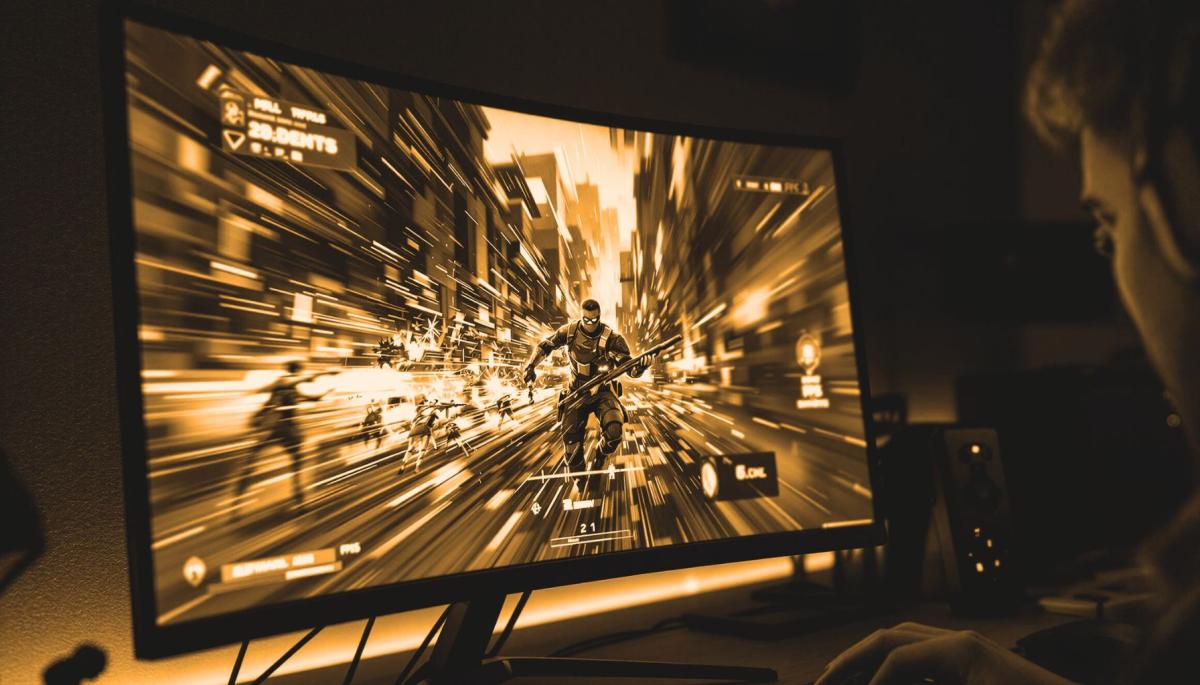Ping and FPS are two key elements that determine the quality of your gaming experience. While ping reflects the speed of communication between your device and the game server, FPS determines the smoothness of the game's graphics. In our guide, you'll learn how to identify errors and how to easily fix them.

Whether you are a casual online gamer or a professional, you have probably encountered issues that prevent you from having a smooth gaming experience. The two most common culprits are ping and FPS (frames per second). However, they work on completely different principles. Below, we have prepared a comprehensive guide for you that tells you how to identify and fix these errors.
What is ping and how does it affect gaming?
Ping is one of the main indicators of the quality of your gaming experience. In short, ping is a measure of the responsiveness between your device and the game server. It is measured in milliseconds (ms) and represents the time it takes for data to travel from you to the server and back. The lower the ping, the faster you are communicating with the game server.
A low ping, usually below 50 ms, ensures smooth responsiveness in games, especially those where speed is crucial, such as shooters or MOBA games. Conversely, a high ping, for example over 100 ms, causes delays between your actions and their execution in the game.
This can lead to issues like 'lag', where the character moves jerkily or actions do not occur on time.
The causes of high ping can vary. The main one is poor internet connection, whether slow or unstable. The distance from the server also plays a significant role — the farther you are from the game server, the higher the ping. Network congestion can also be an issue, such as when you are sharing the connection with other devices or applications.

How to lower ping?
There are several ways to lower ping and thereby improve the quality of your gaming experience. One of the most effective solutions is to switch to a wired connection instead of Wi-Fi. Ethernet connection offers higher stability and speed, which can significantly reduce the response time between your device and the game server.
Another important step is choosing an appropriate game server. If you play on a server geographically close to your location, it significantly shortens the distance that data has to travel, thereby reducing ping. Additionally, limiting network usage by closing applications that consume bandwidth, such as streaming services or large file downloads, is advisable.
Do not forget to update your network drivers. Modern drivers often contain enhancements that can improve your device's performance. The last option to consider is using VPN or specialized gaming network services. These tools can optimize data routing.
What is FPS and how does it affect gaming?
FPS (frames per second) indicates the number of frames your graphics card renders per second. The higher the FPS, the smoother the gaming experience. A high FPS, such as 60 or more, ensures smooth movement and better responsiveness. Conversely, a low FPS, below 30, causes graphics stuttering and delays.
The causes of low FPS can vary. Often, it is due to insufficient hardware, such as an old or weak graphics card, processor, or low RAM capacity. High graphics settings, where the game runs at the highest details, can also burden your system.

How to increase FPS?
We have several methods for you to help increase the frames per second (FPS). The first step is adjusting the graphics settings in the game. Try reducing the resolution, turning off shadows, or limiting texture details.
The next step is updating your graphics card drivers. Manufacturers regularly release new driver versions with enhancements that can boost hardware performance.
System optimization is also key. Closing running applications frees up capacity for the game. If you use an older computer, consider a hardware upgrade. Remember also to cool your computer—overheating can lead to reduced performance.
How to diagnose issues?
To find out if you have a ping or FPS problem, you can use various tools. To test ping, you can use the "ping" command in the command prompt (Windows) or terminal (Mac/Linux). This command gives you the server response and helps identify connection issues.
To measure FPS, you can use a built-in FPS counter directly in games or tools like MSI Afterburner or FRAPS. These provide precise data on frames per second and help you identify performance issues with your hardware.
What will 6G internet bring – lightning-fast connection, smart cities, and artificial intelligence in the network

Mobile networks of the sixth generation will push the boundaries of communication and data transmission. 6G internet will offer speeds in the order of terabits, minimal delay, and integration with artificial intelligence. In the article, we explain how this technology works, how it differs from 5G, what frequencies it uses, and why it is essential for smart cities and modern industry.
Wireless charging: What are its benefits, limitations, and where is it heading?

Wireless charging has evolved from a luxury feature to a standard part of most modern phones. Simply place your mobile on the pad, and energy begins to flow without searching for a cable and connector. We explain how wireless charging works, what it entails, and why Qi and Qi2 technologies have become the new standard of convenience.
What is Wi-Fi 7? What changes does it bring and when does it make sense to switch

Today's home Wi-Fi network is under increasing pressure. It has to handle video calls, online gaming, and dozens of smart devices. The new Wi-Fi 7 standard offers a solution that takes wireless connectivity to the next level. We'll explain what this standard means in practice and why it might be crucial for the future of home and business networks.
What is DNS? Everything you need to know about its functionality and setup

When you type a website address into the browser, the correct page loads in an instant. This is managed by the DNS system, without which the internet as we know it would not exist at all. In this article, you will learn what DNS is, how it works, what types of records it contains, and why it is important for both speed and security of the connection.
How does fiber optic internet work and what do you need for its installation?

Fast and stable connection is a basic necessity in every household today. The solution is fiber optic internet, which works differently than regular cables and offers greater reliability to users. We'll explain how this technology works in practice, what it entails to run a fiber optic cable to your home, and what equipment you’ll need to keep everything running smoothly.
Cloud gaming – the end of consoles in sight?

Cloud gaming allows you to play games from anywhere without the need for expensive hardware. In this article, you'll learn how game streaming works, what advantages and limitations it brings, and which services are leading the way today. And most importantly: can it really threaten traditional consoles?